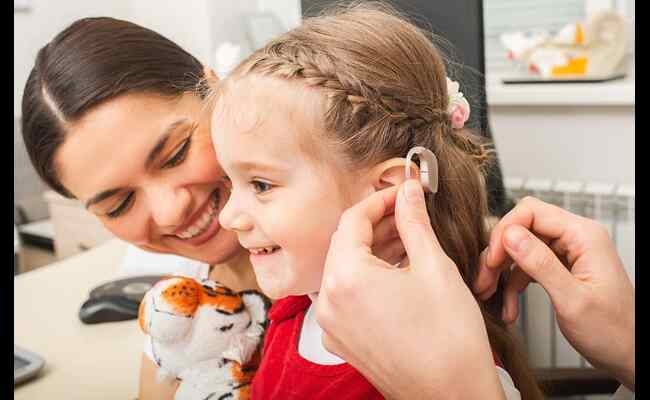Different Styles of Hearing Aids | Hearing Aids for Children is our today’s topic. While many people associate hearing aids with the elderly or adults who have hearing loss, children with hearing impairments can also greatly benefit from them. A lot of kids across the country require listening devices to enhance their hearing abilities and be able to participate fully in their academic and social lives.
If your child is experiencing hearing loss, it’s natural to have questions and concerns about hearing aids. This guide aims to provide parents with essential information about the features and different styles of hearing aids for children as well as some facts about hearing loss, empowering them to make informed decisions for their child’s hearing health.
Different Styles of Hearing Aids | Hearing Aids for Children
Facts About Hearing Loss for Children
Hearing loss can happen to children in various ways—either congenital, meaning it was already present at birth, or it was acquired later in childhood. Congenital hearing loss can either be hereditary or caused by a viral infection during pregnancy. Meanwhile, acquired hearing loss can be due to infectious diseases, medications, and trauma to the ear. Regardless of the cause, hearing loss in children is crucial to identify and address.
Hearing is a vital component of a child’s development, and untreated hearing loss can have severe repercussions. A child with hearing loss may encounter difficulties in developing speech and language, which can have a lasting impact on their educational progress and social life. Hearing loss can hinder children’s ability to learn in a classroom setting, leading to academic struggles and a lack of engagement.
Pediatric Hearing Aids Features
The good news is that some types of hearing loss in children can be corrected with pediatric hearing aids. These devices are essential to prevent future problems. They are designed specifically for kids, typically more durable than their adult counterparts, and built to withstand rough play and everyday wear and tear.
Another significant feature of pediatric hearing aids is the tamper-proof battery compartments that prevent children from accidentally swallowing and choking on the battery. The tamper-proof feature is critical, especially for younger children who may be curious and enjoy exploring objects around them.
The aesthetics and designs of hearing aids for children are significantly different from their adult counterparts. While adult hearing aids are sleeker and more discreet, pediatric hearing aids often come in bright and fun colors to match a child’s preferences. Lastly, they also have large LEDs to help notify a parent or caregiver if the unit is still working.
Common Hearing Aid Styles for Children
There are different styles of hearing aids for children available in the market today. Each of them has their advantages and disadvantages over the others. Here are a few examples you should know:
Behind-the-Ear (BTE) – Due to the way it sits behind the child’s ears, this is the most common hearing aid style for infants and young children. BTEs are known to address a wide range of hearing loss severity and are easy to fit and remove. However, because children grow quickly, the earmolds need to be constantly remade so that they can still fit. Feedback may occur if the earmolds aren’t replaced.
In-the-Ear (ITE) – Also referred to as invisible hearing aids, they are worn inside the ear canal and are barely noticeable. They are custom-made to fit a child’s ears and are commonly made from durable hard plastics. One downside to ITEs is that they’re not recommended for younger children because of their growth.
Bone Conduction Hearing Device (BCHD) – This style of hearing aid delivers vibrations through the child’s skull directly to the inner ear. BCHDs are often recommended for children who cannot use conventional hearing aids.
Receiver-in-the-Ear (RITE) – RITE hearing aids are similar in design to BTEs. However, the difference between the two is that with RITEs, the receiver is inside the patient’s ear. Because of that, this style can be made smaller. However, it won’t fit every child’s ear canal. Additionally, they’re also not meant for younger children and those with severe hearing loss.
Contralateral Routing of Sound (CROS) – If your child is suffering from single-sided deafness, then a CROS hearing aid may be suitable for them. With a CROS hearing aid, the sound detected by the aid on the bad ear is transmitted to the aid on the other side.
When it comes to hearing aid usage, it’s important to communicate with an ear health care professional. That way, you’ll know what kind of treatments your child needs best. In addition, frequent follow-up appointments will be necessary to monitor if the hearing aids are working and to see if there are some adjustments to be done.
